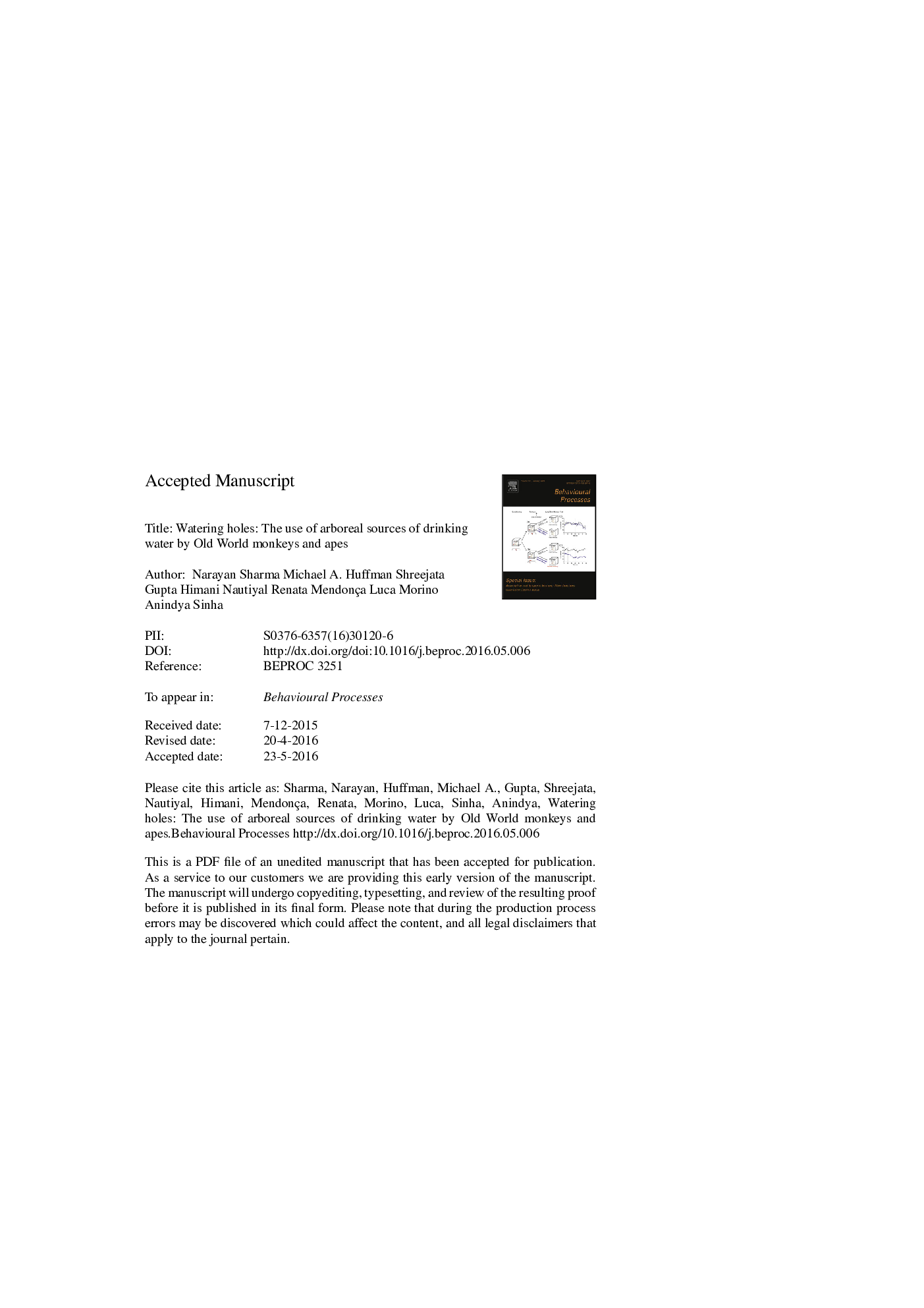| Article ID | Journal | Published Year | Pages | File Type |
|---|---|---|---|---|
| 8497057 | Behavioural Processes | 2016 | 24 Pages |
Abstract
Water is one of the most important components of an animal's diet, as it is essential for life. Primates, as do most animals, procure water directly from standing or free-flowing sources such as pools, ponds and rivers, or indirectly by the ingestion of certain plant parts. The latter is frequently described as the main source of water for predominantly arboreal species. However, in addition to these, many species are known to drink water accumulated in tree-holes. This has been commonly observed in several arboreal New World primate species, but rarely reported systematically from Old World primates. Here, we report observations of this behaviour from eight great ape and Old World monkey species, namely chimpanzee, orangutan, siamang, western hoolock gibbon, northern pig-tailed macaque, bonnet macaque, rhesus macaque and the central Himalayan langur. We hypothesise three possible reasons why these primates drink water from tree-holes: (1) coping with seasonal or habitat-specific water shortages, (2) predator/human conflict avoidance, and (3) potential medicinal benefits. We also suggest some alternative hypotheses that should be tested in future studies. This behaviour is likely to be more prevalent than currently thought, and may have significant, previously unknown, influences on primate survival and health, warranting further detailed studies.
Related Topics
Life Sciences
Agricultural and Biological Sciences
Animal Science and Zoology
Authors
Narayan Sharma, Michael A. Huffman, Shreejata Gupta, Himani Nautiyal, Renata Mendonça, Luca Morino, Anindya Sinha,
